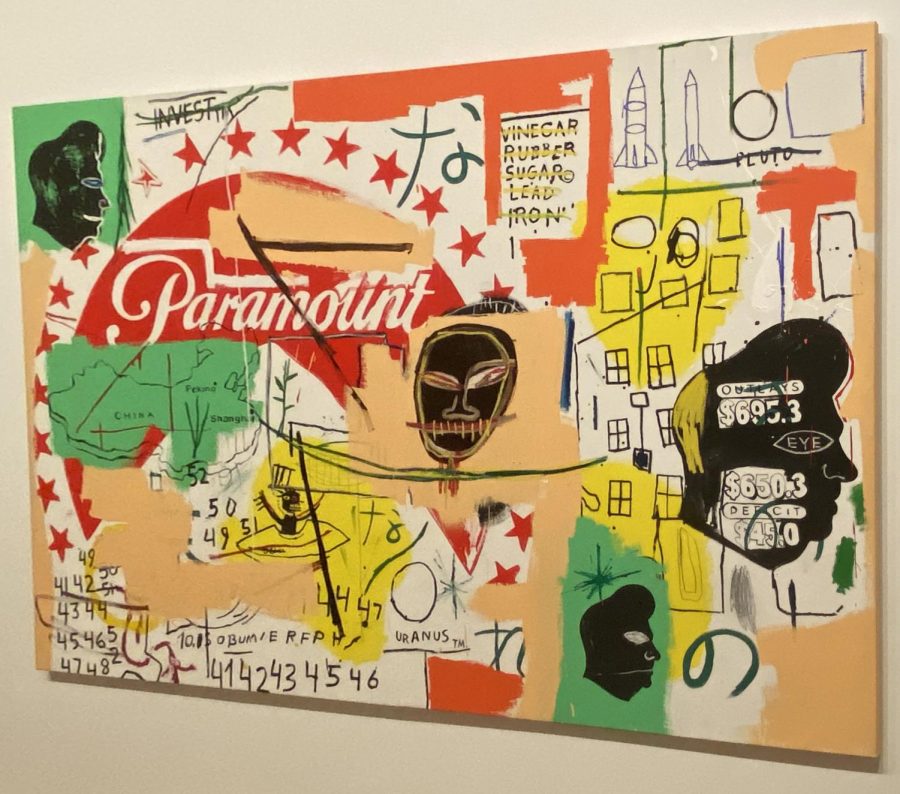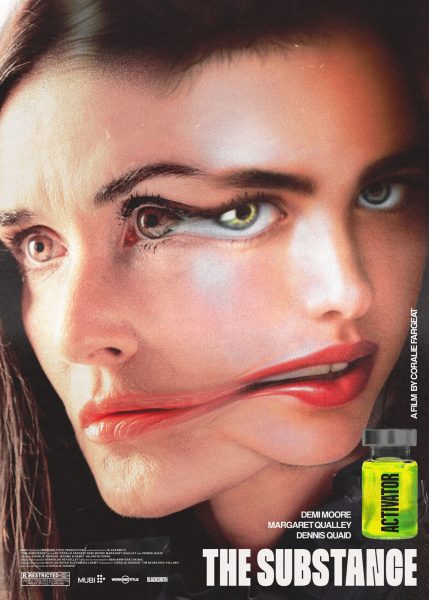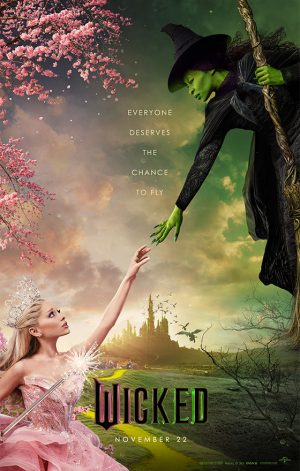Art Institute’s Warhol exhibit has something for everyone
Warhol and Basquiat’s “Paramount”
As he walked into the exhibit, Ijaaz Yousuf was overwhelmed by 20-foot high walls covered in a pink cow wallpaper. At the top of the walls were portraits of various celebrities in a similarly vibrant style.
“It’s so radically different from what’s in the rest of the institute,” Yousuf, Div. 162, said.
According to Art Institute volunteer Frances McMahon Ward, the new exhibit entitled “Andy Warhol: From A to B and Back Again” features over 400 pieces of art from iconic American artist Andy Warhol.
“It’s pretty rare to have them all together,” Ward said.
There are pieces from his early days as an advertisement graphic designer, when he did logos and brand work, and his iconic Pop art pieces that feature vibrantly colored screen printed portraits of celebrities. The exhibit is also full of art that resembles everyday objects, like the Coca Cola bottles and dollar bills that draw inspiration from Warhol’s previous advertising career before making.
The exhibit shows many of Warhol’s more popular pieces, such as the silkscreen portraits of Marilyn Monroe and Mao Zedong. Warhol gained an interest in pop culture and celebrities in the early 1960s, and they began to reflect the subject matter of his art.
“One of the biggest pieces in the exhibit is a picture of Mao Zedong, who’s covered in lipstick and eyeliner,” Yousuf said. “It’s very altered and almost kind of whimsical. And you can tell he’s sort of making jokes of these serious politicians.”
Warhol’s art in this period is his most known and recognized for its colorful and flashy style that helped define the genre of Pop Art.
Ms. Wain, AP art history teacher, says this style stood out from the abstract style that most artists made at the time.
“Warhol and his community kind of reacted and said, ‘We’re not gonna go for abstract, we’re gonna go for the most literal, most easy to understand subject matter that will appeal to everybody,’” Wain said.
Warhol’s work gained popularity from its recognizable subjects, like Elvis Presley and Campbell’s soup cans.
“I mean, America is a very consumer culture and has been for quite a while,” Wain said. “But specifically, Warhol chose consumer items to appeal to a larger audience.”
The exhibit also displays pieces from Warhol’s art in the late 60s and 70s. It includes large canvases with his signature use of color, but this time with darker tones. There are paintings of skulls and guns and a screen print of an electric chair.
In the 80s, Warhol’s art was more experimental and began to stray away from his iconic subject matter. A picture of the Last Supper covered in camouflage print sits on a wall across from a green silkscreen self-portrait photograph of Warhol taking up the wall. On the other sides of the wall are contrasting black and white Rorschach-esque prints.
The room with these paintings feels out of place in the exhibit, until exhibit goers start to recognize familiar details in the pieces.
“I think that there’s a way to grab onto it, and sometimes that’s all people need to feel a little bit more connected to the piece,” Ward said when asked about the appeal of the art.
While this era of Warhol’s art is considered abstract compared to his other pieces, it doesn’t lose the appeal. This can be seen in Warhol’s piece “Paramount,” a collaboration with Jean-Michel Basquiat, where he collages the Paramount Studios logo, silhouettes and price tags, all things people can find every day in Warhol’s art.
The exhibit is an interesting and quirky experience for anyone to enjoy. Tickets are $7 and it runs until Jan. 26.
Your donations directly fund the Lane Tech student journalism program—covering essential costs like website hosting and technology not supported by our school or district. Your generosity empowers our student reporters to investigate, write, and publish impactful stories that matter to our school community.
This website is more than a publishing platform—it's an archive, a research tool, and a source of truth. Every dollar helps us preserve and grow this resource so future students can learn from and build on the work being done today.
Thank you for supporting the next generation of journalists at Lane Tech College Prep!

Jack Belmont is a senior beginning his second year with The Champion (formerly The Warrior). Jack loves taking photos and is co-president of Lane’s Photography...






